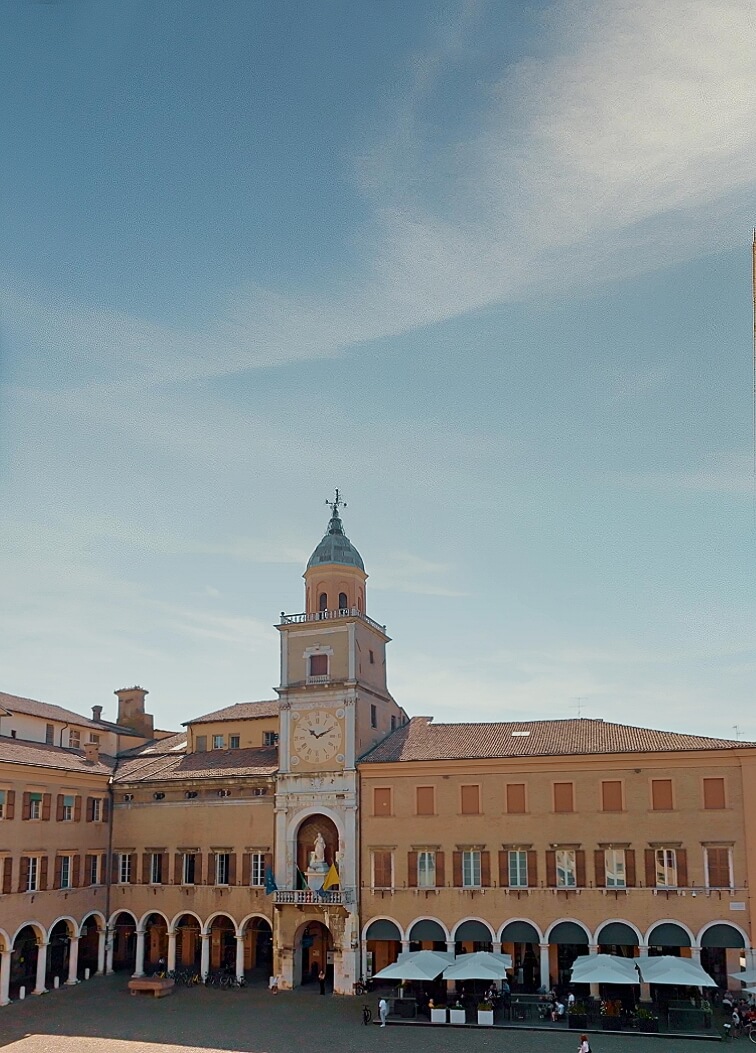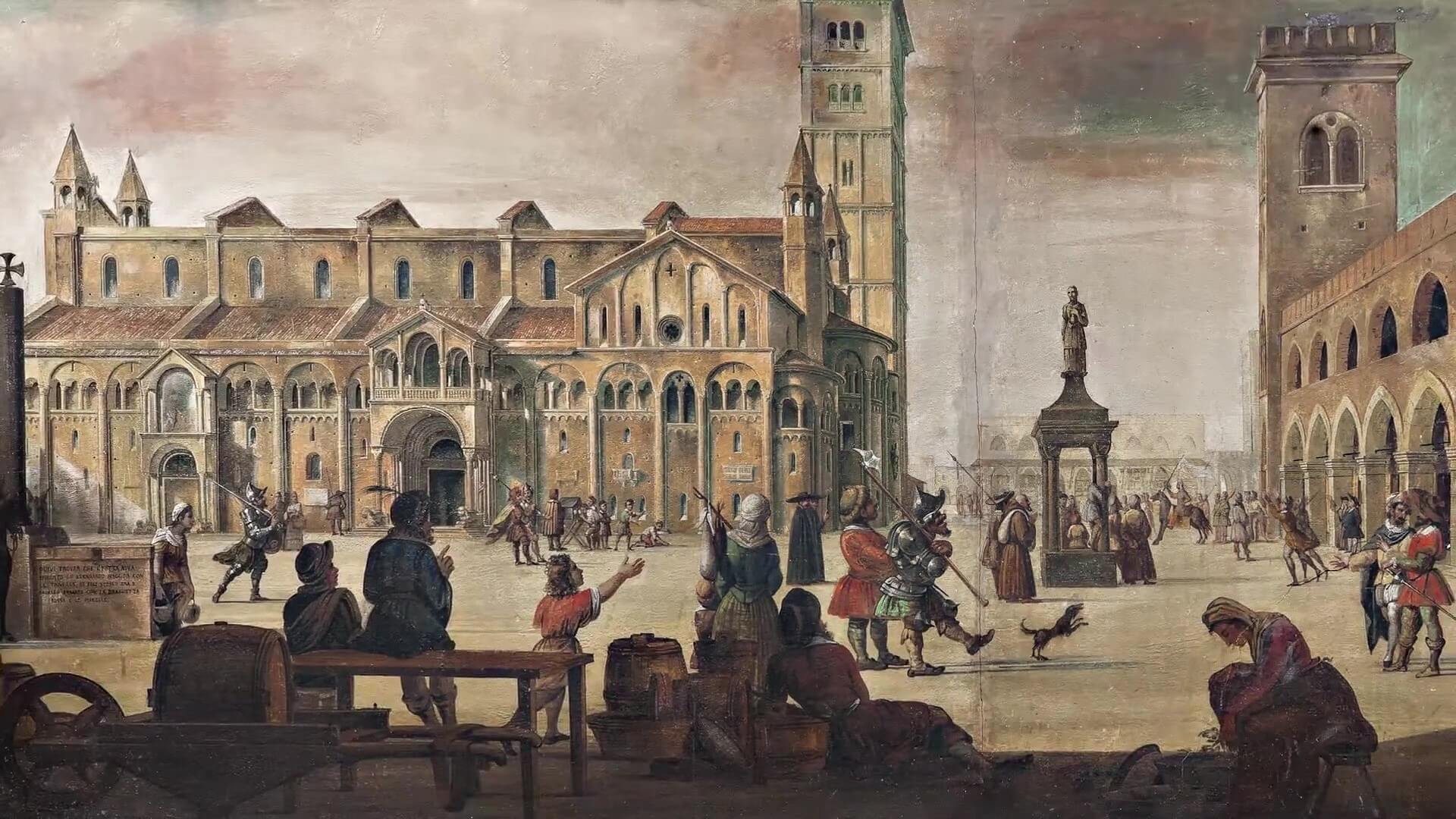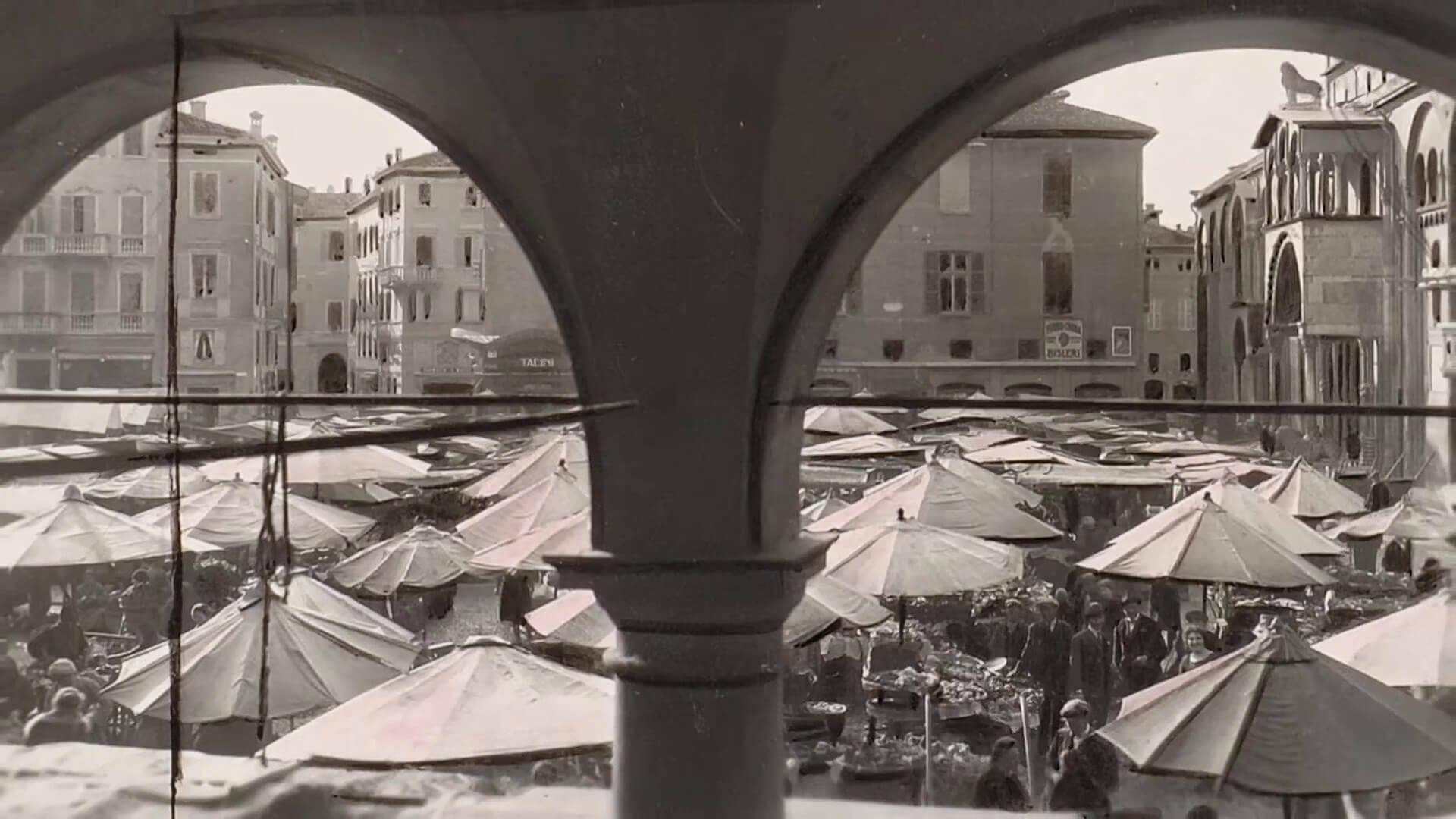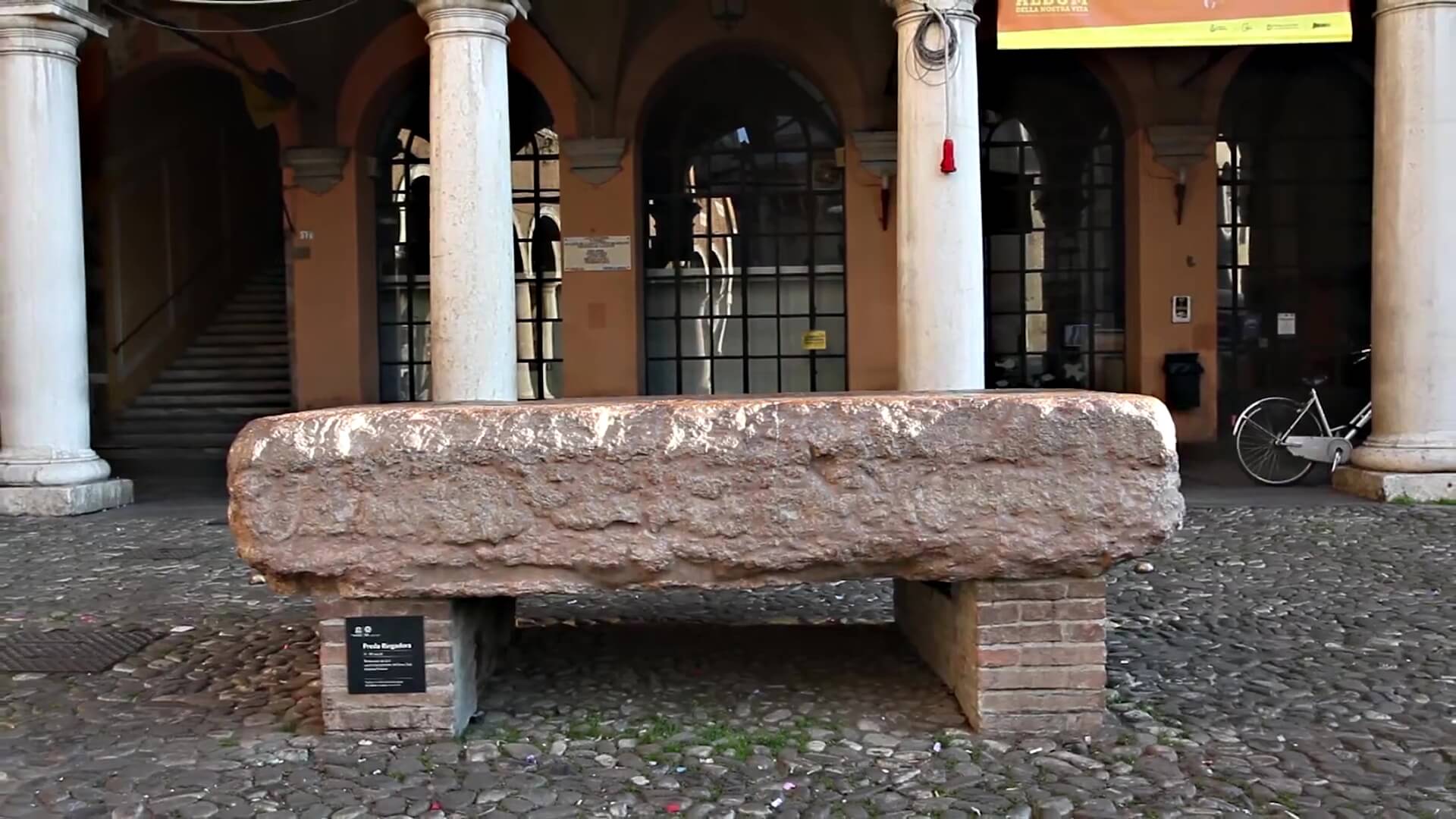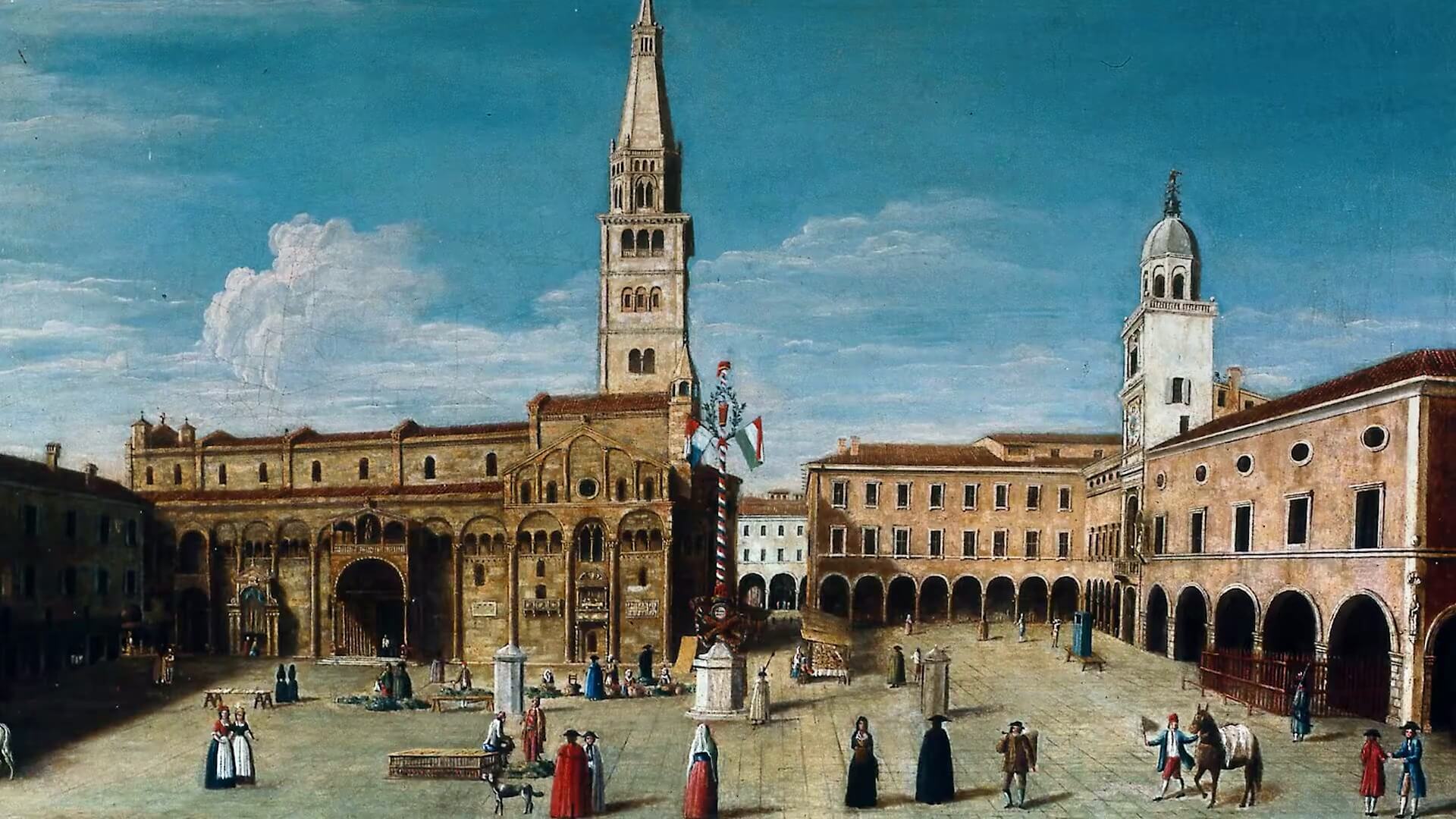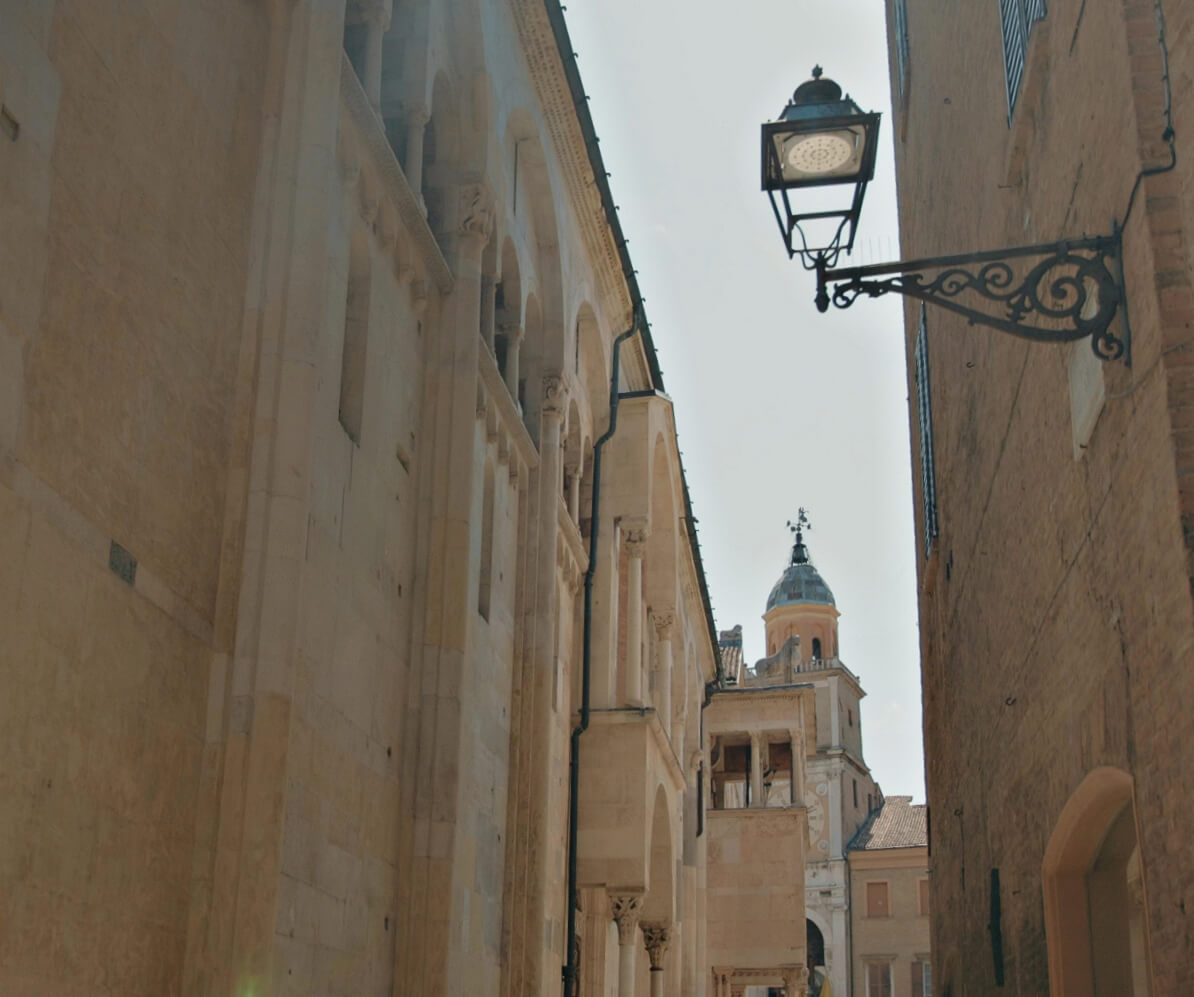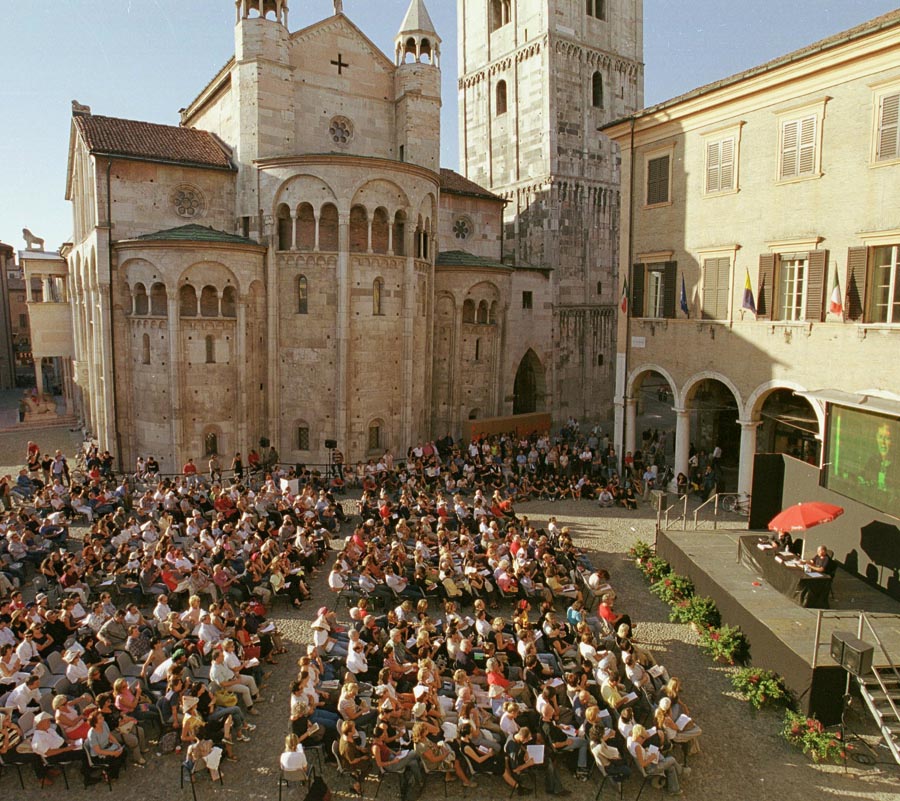Piazza Grande in Modena,
the beating heart of the city
GREAT SQUARE
Founded in the 12th century, the Piazza del Duomo in Modena took on the appellation Grande from the second half of the 17th century and has always been the place from which the political power of the citizens' representatives, but also religious power, is managed.
AT SCHOOL WITH UNESCO
PIAZZA GRANDE AND TOWN HALL
From the Duomo's Porta Regia and the 16th-century pulpit, from the railing of the Palazzo Comunale, or before that from the Pietra Ringadora, The rules of religious and civic life are formulated here.
Beautifully framed by the Ghirlandina tower, from the airy portico of the Town Halladministrative, but in the past also judicial and criminal, and by the Cathedralwas a space that citizens once felt was theirs, so much so that the statutes often forbade going there to eat or dance.
The functions of Piazza Grande in Modena in antiquity
Religious power and political power often clashed over the ownership and use of Piazza Grande, as demonstrated by the events surrounding the expenses for the restoration of the Ghirlandina tower in the 16th and 17th centuries or the numerous clashes between the sacredness of places of worship and the materiality of the city's economywhich with its banquets and shops almost invaded Modena Cathedral.
Trade exchanges
Exclusive market placeit was the community that determined the time and place of the exchange and the arrangement of the stalls on the Piazza, mobile and temporary structures that on Saturdays and other days had to be lined up in long parallel rows. To this economic connotation could be linked the Bonissima, now located on the corner of the Town Hall.
The square, the market, the shops under the portico of the Town Hall were more than just a place of trade: they were meeting placeof talk about city events, of exchange of views on political, religious and customary facts.
Rituals of justice
Justice was also administered in the Piazza, mostly on market day on Saturdays: the terrible spectacle of justice was shown in the Piazza through the use of the gallows, the block, the instruments of torture, of Ringadora Stoneon which the bodies of strangers were deposited for identification, collected under the arcades, or fished out of the canals, or lowered from the noose hanging from the Palace.
Religious processions and pagan festivals
This space was also the scene of the solemn religious processionswhich then unravelled through the main city streets. The Municipal Council itself organised, with the great participation of the people, penitential processions, sacred representations and the numerous festivities in honour of the patron Saint Geminianus.
Masquerade parties and horse rides enlivened Piazza Grande in the carnival or other happy occasions and were intertwined with fairs. The opening of the lawful time for merriment was signalled to the people by a colossal mask (the mascherone) that was lowered from the top of the Town Hall.
During these times, tournaments were organised, ladies' and gentlemen's carriages and allegorical floats paraded; alongside the stalls selling goods of all kinds, the stages of acrobats and charlatans that proposed miraculous remedies.
Piazza Grande in Modena was ablaze with the large fires to celebrate joyful events involving the citysuch as the birth of princes or the election of a distinguished citizen to the cardinalate.
Piazza Grande in Modena after the
construction of the Ducal Palace
PALACE
DUCALE

